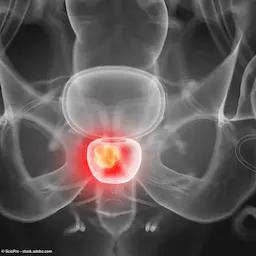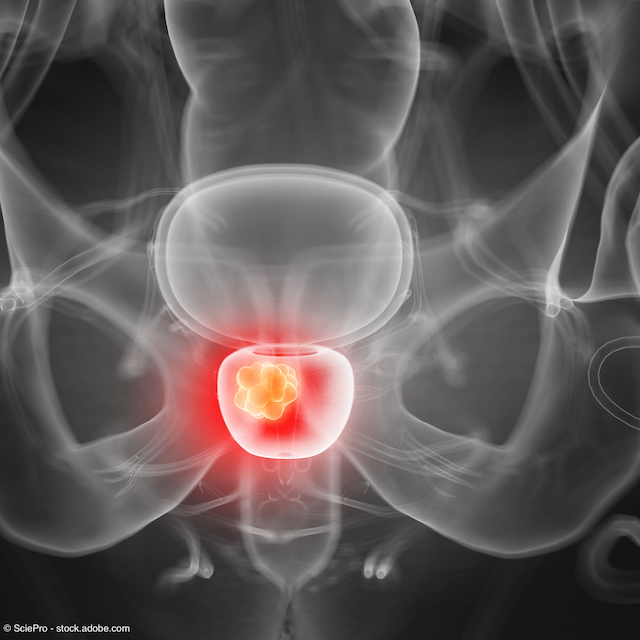News
Article
Real-world data show impact of piflufolastat F18 on prostate cancer management
Author(s):
Key Takeaways
- Piflufolastat F18 scans led to treatment changes in 45% of newly diagnosed and 74% of recurrent prostate cancer cases.
- Clinicians reported increased confidence in treatment decisions, with 96% agreeing on the utility of piflufolastat F18.
The results encompassed the first 100 patients enrolled in the registry.
Preliminary findings from the PYLARIFY registry (NCT05712473) highlight the real-world clinical utility of piflufolastat F18 and the impact of scans on a clinician’s treatment management decisions.1
Overall, 96% of clinicians indicated that piflufolastat F18 improved their confidence in treatment decision-making.

Piflufolastat F18 was approved by the FDA in May 2021 for PET imaging of prostate-specific membrane antigen (PSMA)-positive lesions in men with prostate cancer.
Data from the registry, which is collecting findings on the real-world clinical utility of the agent, were presented at the 2025 American Society of Clinical Oncology Genitourinary (ASCO GU) Cancers Symposium in San Francisco, California.
The results encompassed the first 100 patients enrolled in the study. Of these, 40 patients had newly diagnosed prostate cancer and had not yet received any treatment (cohort 1), and 60 patients were undergoing scans for biochemical recurrence (cohort 2). The median age of participants was 70.7 years and 71.3 years, respectively.
In total, 10% of patients in cohort 1 and 77% of patients in cohort 2 received at least 1 conventional imaging procedure prior to piflufolastat F18. The average number of conventional imaging procedures per patient was 1 and 1.58 in each cohort, respectively. The most common conventional imaging modalities used prior to piflufolastat F18 across both cohorts were CT (80%), skeletal scintigraphy (72%), and PET (26%).
In cohort 1, those who underwent both piflufolastat F18 and conventional imaging had an added 28 days to the length of their diagnostic journey compared with those who only underwent piflufolastat F18.
Data also showed the impact of piflufolastat F18 imaging on management plans. In cohort 1, piflufolastat F18 scans led to treatment escalation in 30% of patients, treatment de-escalation in 15% of patients, and no change in 55% of patients. In cohort 2, piflufolastat F18 scans led to treatment escalation in 57% of patients, treatment de-escalation in 17% of patients, and no change in 27% of patients.
Overall, 96% of clinicians strongly agreed (53%) or agreed (43%) that piflufolastat F18 improved their confidence in their treatment decision-making. The remaining respondents neither agreed nor disagreed with the statement.
In total, the multicenter, prospective, observational PYLARIFY registry plans to enroll up to 500 patients in the US across both cohorts.2 To be eligible for enrollment, patients need to be at least 21 years of age and eligible for a PSMA/PET scan. Participants must also have histopathological-confirmed prostate adenocarcinoma and a life expectancy of at least 6 months. Follow-up for each patient will occur for up to 5 years.
Among the first 100 patients enrolled in the study, 35% in cohort 1 and 26% in cohort 2 were Gleason grade 8 or higher at the time of diagnosis. Additionally, 90% of patients in cohort 1 and 74% of patients in cohort 2 were classified as being in the intermediate-to-high Gleason group at diagnosis. At diagnosis, 98% of patients in cohort 1 and 95% of patients in cohort 2 presented with non-metastatic hormone-sensitive prostate cancer.
Overall, 38% of patients in cohort 1 and 32% in cohort 2 were current or former smokers.
Data collection in the registry remains ongoing, with final completion expected in June 2029.
REFERENCES
1. Shore ND, O’Donnell L, Wilson B, Dave SS, Kashyap A, Lazarou N. The role of conventional imaging and piflufolastat F18 in newly diagnosed and recurrent prostate cancer patients: preliminary observations from the PYLARIFY registry. J Clin Oncol. 2025;43(suppl 5). Abstract 41. doi:10.1200/JCO.2025.43.5_suppl.41
2. An observational registry assessing the impact of PYLARIFY (piflufolastat F18) PET in patients with prostate cancer. ClinicalTrials.gov. Updated February 3, 2023. Accessed February 20, 2025. https://clinicaltrials.gov/study/NCT05712473














